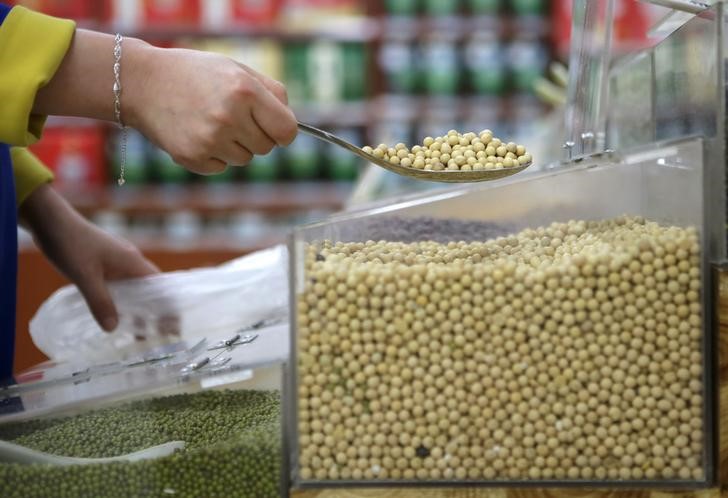ROME (Reuters) - World food prices fell in August from the month before as the prospect of bumper harvests pushed down cereal values, the United Nations food agency said on Thursday.
Despite the drop, food on international markets remained 6 percent more expensive than a year earlier. Food commodities have emerged from an era of intense volatility and the U.N. Food and Agriculture Organization (FAO) expects them to remain stable over the next decade.
The FAO's food price index, which measures monthly changes for a basket of cereals, oilseeds, dairy products, meat and sugar, averaged 176.6 points in August, down 1.3 percent from July.
The cereals sub-index fell 5.4 percent due to expectations of higher production, especially in the Black Sea region. Meat and sugar prices also declined due to high supply forecasts.
Global cereals output is expected to hit an all-time high of 2.611 billion tonnes in the 2017-18 season, up 18.4 million tonnes on the previous month's forecast, the FAO said, and worldwide stocks are also set to hit a new record.
Food prices rose steadily in the three months preceding August, but ample supply looks unlikely to leave room for price increases in the near future, FAO chief economist Abdolreza Abbassian said.
"Overall supply for nearly all the commodities we cover points to levels which go beyond projected demand, at least for now," he said. "The potential dynamic in the future seems to be rather bearish in most aspects."
If forecasts come to fruition, the cereals harvest will be slightly higher than a record hit last year. The FAO also raised its estimate for global wheat output to 748.8 million tonnes, up 1.2 percent from the prior month's forecast.

Hurricanes in the United States have not affected the crops covered by the index, Abbassian said, as harvests had been carried out before they struck, although there would be a localized impact on infrastructure.
